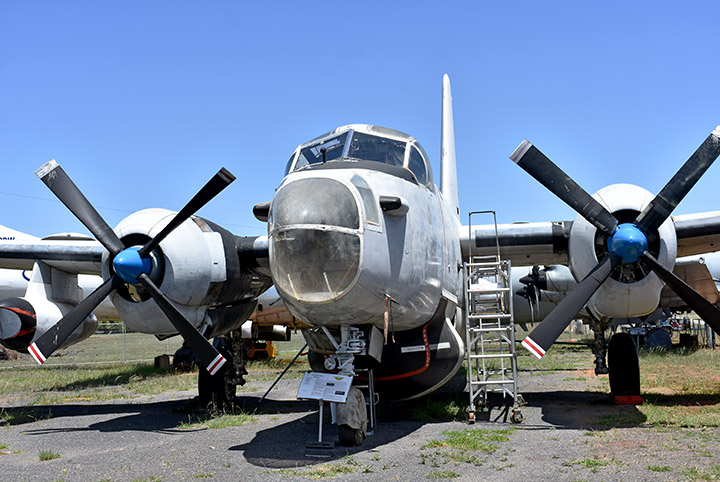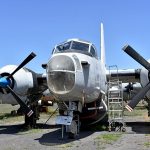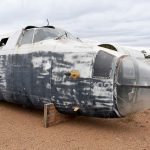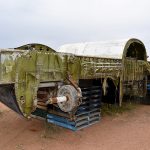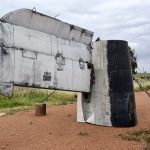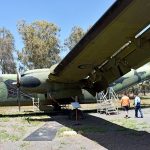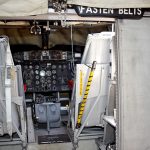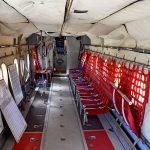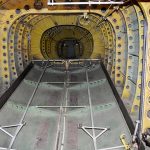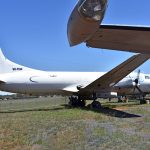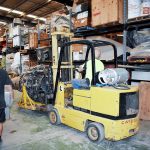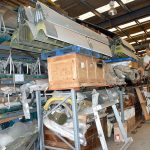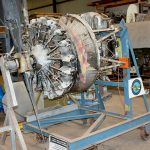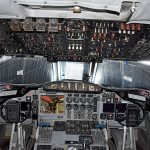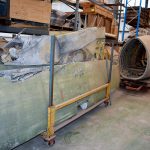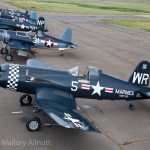Our good friend John Parker at Warbirds Online recently revisited the Parkes Aviation Museum in Parkes, New South Wales, Australia to participate in some of the volunteer restoration work taking place there. He took the opportunity to take a few photographs of some of what has been happening since his last visit to document the arrival of Lockheed P2V-5 Neptune A89-302 which we recounted. The museum, as we mentioned, is closely affiliated with the Historical Aircraft Restoration Society (better known as HARS), and has a lot of fascinating work taking place on some significant airframes. So now, over to John to tell more of the story…
It is over a year since we visited the Historical Aircraft Restoration Society (HARS) Parkes NSW Aviation Museum and storage facility. We recently returned to assist with the activities at both Parkes sites. HARS runs regular working parties to assist in growing the Museum at the Parkes airport and manage the storage facility at the nearby former Austop wool processing plant. Although you have to be a HARS member to participate (easy and inexpensive to achieve) we can attest to the fantastic experience of being part of the working parties and being involved in a huge variety of work needed at both HARS Parkes sites.
At the Museum our group was involved in preparing Lockheed P2V-7 (SP-2H) Neptune A89-272 C/n 149072 for painting. This involved sanding down the entire airframe and cleaning off decades of dirt. This huge aircraft has only recently been reassembled and is already looking much better now it is a whole airframe again. The Neptune currently sits in the parking area adjacent to the WW11 RAAF Bellman hangar where the majority of the Museum exhibits have been located for a couple of years. Once the paint has been completed detailed markings will be re applied and the aircraft will be ready for display. Work will however continue on the internal fit out of the aircraft to bring it up to the usual high standard of HARS aircraft. This particular aircraft came from RAAF Townsville Gate and had been damaged in a cyclone and was subsequently utilized as a spares source for the new gate guard A89-280 so it needs a lot of internal refurbishment.
It joins a second Neptune, A89-302, a very rare early-series aircraft, that has recently been moved from RAAF Point Cook to the HARS storage area at Parkes (as covered in our previous article). This will provide the only location in Australia to see both models of Neptune that served with the RAAF.
Another recent addition to the Museum collection is Lockheed Orion ex-RAAF A9-759 C/n 160759, an AP-3C 5674 which on 19/04/2018 was handed over to the Parkes Aviation Museum as a static display and, if needed, to provide a source of spare parts for HARS operation of A9-753 (based at HARS Albion Park). This aircraft flew in and is in airworthy condition. It is intended to maintain the aircraft in the best possible condition. Visitors are able to access the aircraft and walk through it which is a great experience as it is exactly as it was during its service life. For the time being the Orion is parked in the open next to the Neptune.
de Havilland DHC-4 Caribou (A4-275), which was transported by road from Oakey in Queensland several years ago, is almost finished its restoration and now looks immaculate following a marathon effort with most of its systems fully operational again. It remains on display in the parking area adjacent to the former RAAF WWII-era Bellman hangar. In the longer term, the goal will be to raise funds to place all of the externally displayed aircraft under cover and in a more flowing configuration.
In the Museum proper, considerable detail work has taken place to enhance the visitor experience with improved signage and audio visual presentations. In addition, most of the aircraft displays within the hangar have continued to receive restoration work and all look in excellent condition, including the North American Harvard, Bell AH-1 Huey Cobra, de Havilland DH.114 Heron (finished to represent VH–AHB, previously VH-NJI), GAF Jindivik (A92-22) and Lockheed 12 Electra Junior.
Convair 580 (VH-PDW), which has been located at the museum for some time, is now being readied for a return to service with HARS. To this end, our group was responsible for removing a galley from a scrapped Convair 580 tail section for refitting to this aircraft at the storage facility. This was a difficult, but interesting task which was very satisfying when completed.
The storage facility continues to be reorganized so parts can be more easily identified and accessed. During our working party, we were responsible for removing six Pratt & Whitney R-1830 Twin Wasp engines from storage for transport back to Albion Park for rebuilding to be used in the HARS airworthy fleet. The work party also removed several QANTAS Boeing 707 galleys for use in a catering project at Albion Park. We also cleaned and tidied up the storage area.
We can highly recommend a visit to the museum at Parkes, and especially joining HARS as a member and participating in the working parties. Volunteers can choose to work for 3 or 4 days at a time and as many time as they like each year. Accommodation is provided, but volunteers must provide their own transport. However, it is possible to carpool with other volunteers. The work groups provide the opportunity to contribute to the Southern Hemisphere’s largest aviation museum and achieve real satisfaction whilst you meet new friends, share experiences and acquire new skills.
Warbird enthusiasts of all ages and backgrounds are encouraged to join HARS, be it at Albion Park and/or the Parkes facilities, and start a new phase of their lives. It is addictive! Details of membership are to be found on the HARS Website.
HARS anticipates that the Museum will grow significantly in the coming years and continue to be a major attraction for the region. At present, the Museum is open on Thursdays and Sundays. The Parkes Aviation Museum is located at the end of Muzycuk Drive at Parkes Airport. Visitors are encouraged to stop by and have a look through the exhibits, including a very interesting collection of engines on display.
Many thanks indeed to John Parker for this report. Please do visit his site WarbirdsOnline for more of his great articles!







